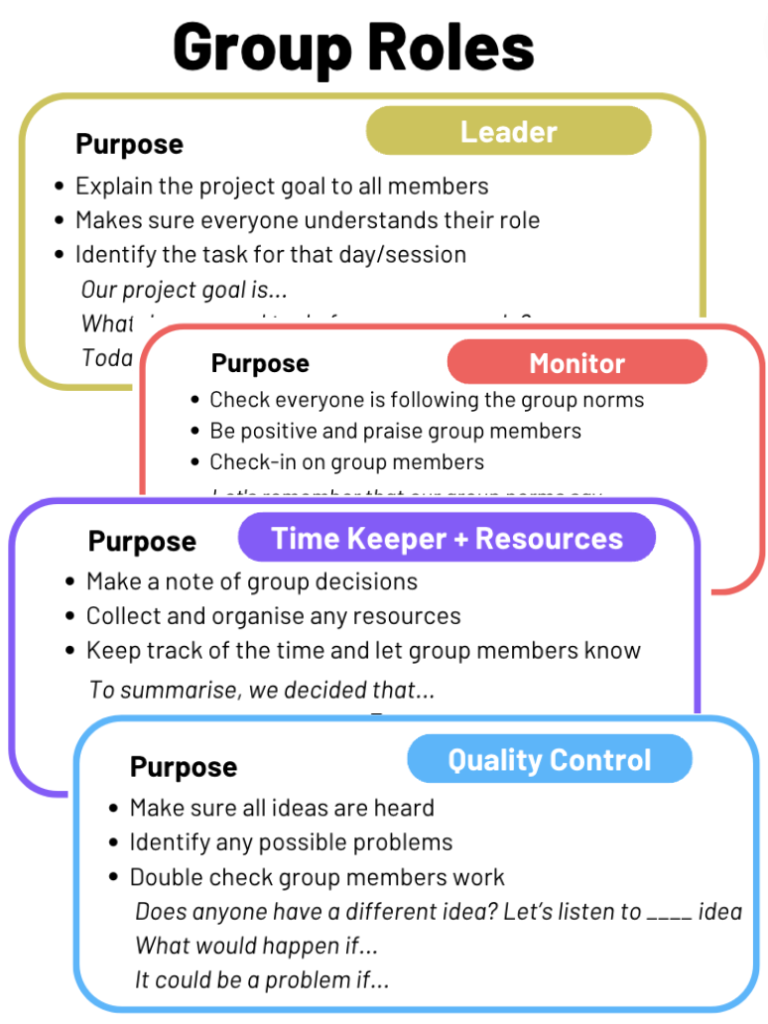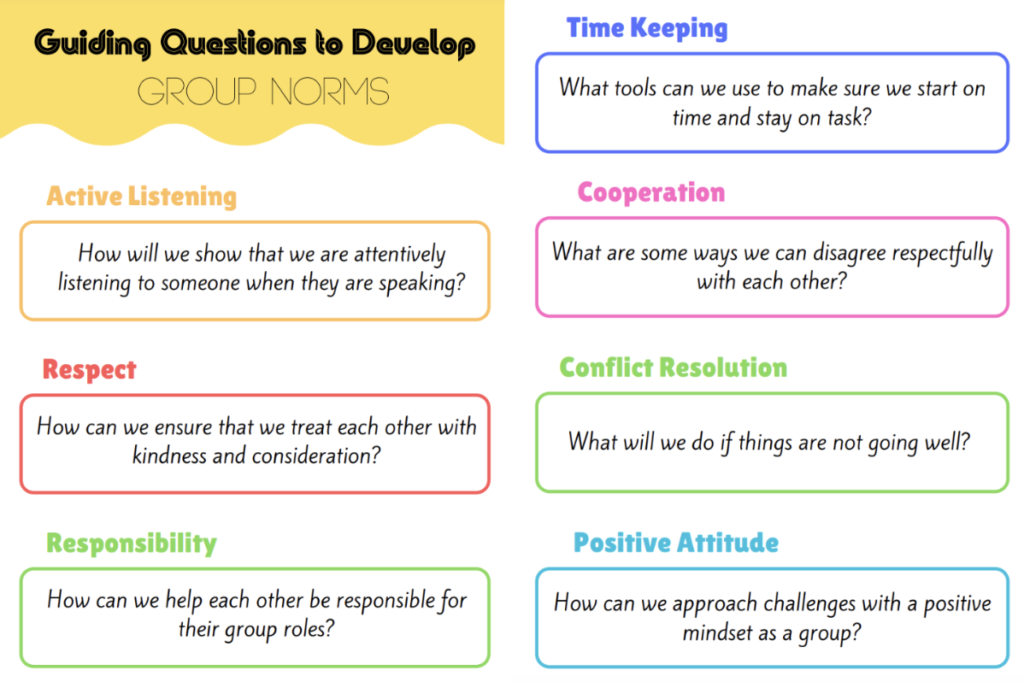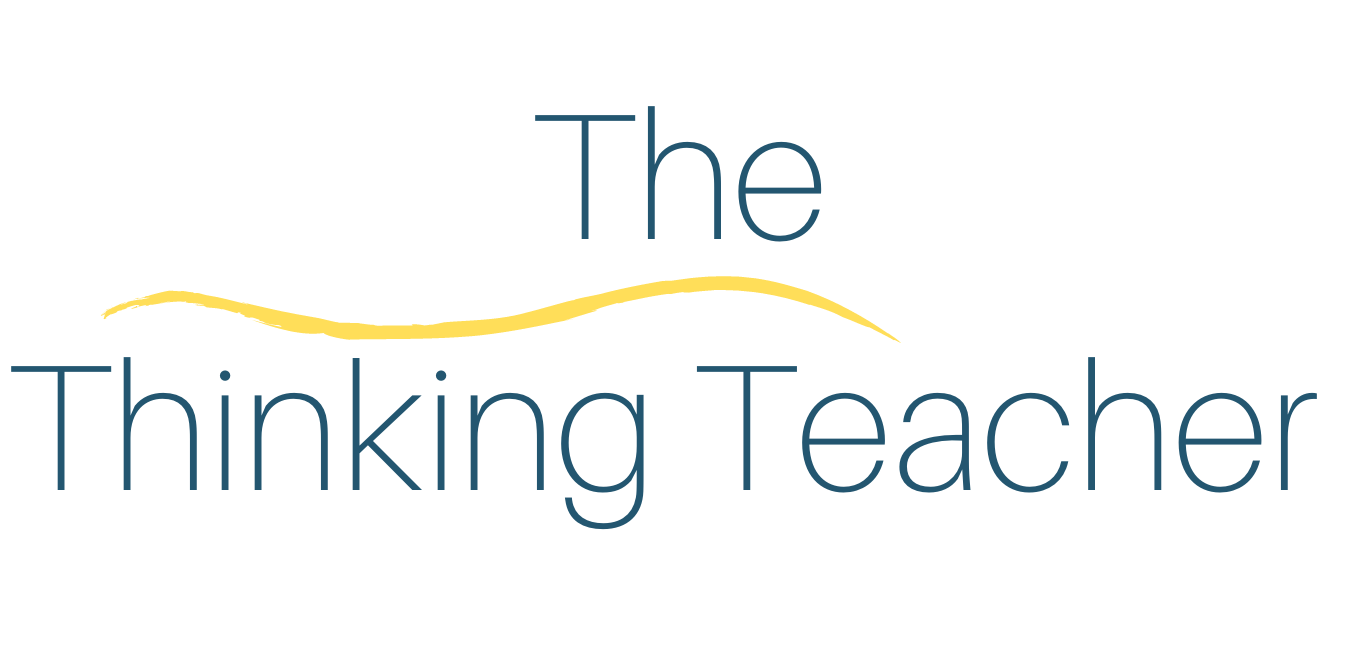Classroom Collaboration: The Power of Group Work for Elementary Students

The idea of group work and long-term projects, in particular, often begin with enthusiasm from both teachers and students. However, in my experience, regardless of the initial excitement, the results seldom meet our expectations. Inevitably, students encounter frustration with their group members, and the impending deadline induces stress. The teacher can clearly see students are unlikely to complete the project on time and that what is produced is far from what they hoped. As the deadline approaches, there is a collective sense of relief! Despite these challenges, why do we continue advocating for group work?
Group work and collaboration within the classroom can yield many social and emotional benefits. It can foster valuable communication skills, including listening to differing perspectives, articulating thoughts and ideas clearly and learning to reach a consensus. Group work discussions can also allow students to gain insights from one another that could not happen when working independently, thus promoting a deeper understanding of the content.
The benefits of group work are evident, whether it’s an hour-long project or one spanning several weeks. Anticipating potential pitfalls and challenges students might encounter in advance can allow you to design group work with a better chance of success, harnessing the full benefits of collaborative efforts.
So, what factors should be considered when designing group work to make it effective?
1. “Group-worthy tasks”
In the article “Designing the supports for successful group work: How to make your task group-WORTHY”, Swartz and DeRosa (West Chester University of Pennsylvania) state that one of the most commonly noted challenges when it comes to group work is ensuring that all students are engaged in the task meaningfully. To do so, the first thing that must be considered is whether the task is “group-worthy” or not.
Swartz and DeRosa suggest reflecting on the purpose of this task. Why is it crucial for students to collaborate on this rather than working alone? Does the outcome of this project depend on the collaboration of students with diverse skills working together to accomplish the final product?
While the advantages of group work, such as the social-emotional benefits and enhanced communication skills, have been highlighted, it is essential to recognize that these benefits hinge on the appropriateness of the task. Since students bring diverse abilities, strengths, and skills to the table, the chosen task must accommodate and leverage this diversity effectively.
Secondly, Swartz and DeRosa emphasize the significance of selecting open-ended tasks, offering various entry points and multiple avenues for problem-solving. Furthermore, communicating these insights to students is equally vital, ensuring they grasp the significance and intention behind why the task needs to be a group effort.
While any task can be a group project, the crucial question we must ask is whether it needs to be.
2. Group Roles
Swartz and DeRosa also highlight the challenge of ensuring equal participation and contribution from all students. It can be frustrating for students when one member feels they are shouldering a heavier load than others. I recall several occasions when observing groups and noting the contrast between those trying their best to complete the task and those using it as an opportunity to socialize.
One way to tackle this challenge is to assign clear individual roles. Various protocols and suggestions for group roles exist, which can be tailored to the age of the students and the group’s size.
Whichever group roles are chosen, each member must have;
- a defined purpose
- clear instructions for the specific task
- sentence stems to keep the conversations on task
These group role cards from The University of Waterloo’s article “Group Work: Assignment of Roles” have been adapted for younger students. Depending on the task, these group roles can be rotated to provide students with experience with different roles.

3. Group norms
Group norms are occasionally confused with group roles, yet their functions are distinctly different. Group norms set the expectation for everyone to participate and contribute equally, while group roles assign specific tasks to each group member, as discussed previously.
While it may seem obvious that all group members should participate equally, having this conversation makes this expectation explicit and increases the likelihood that students will stay engaged and participate throughout.
Involving students in generating these norms can foster greater ownership and compliance. Asking students to craft group norms can be challenging; however, This process can be facilitated by offering specific areas of focus and guiding questions.
Active Listening
How will we show that we are attentively listening to someone when they are speaking?
Respect:
How can we ensure that we treat each other with kindness and consideration?
What steps can we take to avoid using hurtful language or making fun of others?
Responsibility:
How can we help each other be responsible for their group roles?
Time Keeping:
What tools can we use to make sure we start on time and stay on task?
Cooperation:
What are some ways we can disagree respectfully with each other?
Conflict Resolution:
What will we do if things are not going well?
Positive Attitude:
How can we approach challenges with a positive mindset as a group?
How when group members have done a great job?
Group norms for short projects can simply be verbal agreement or a brief discussion with guiding questions; however, for longer and more complex tasks, students can be encouraged to create a ‘contract’ where they sign their names and review these group norms before every session.

4. Managing Time
Managing time effectively is a frequent challenge, especially when completing longer projects.
Breaking down tasks into manageable chunks is a skill that many adults find challenging, and so should be considered when expecting this from students. Ineffective time planning often results in significant delays or, in some cases, an inability to complete the project.
Supporting students to break down longer projects into manageable segments and assigning specific timeframes becomes invaluable. Making the time to break down tasks before the project starts ensures timely completion and sufficient time for producing high-quality work.
Assigning a time management group role is often effective, especially with older students with stronger executive functioning skills.
5. Modelling group work
Reminding students to take turns or share responsibility for tasks when working in a group may seem straightforward, but these concepts can often be abstract for students, making them challenging for them to do. As teachers, we might sometimes overlook this, so investing time in modelling effective group work behaviours can significantly aid students in understanding what they should be doing and saying.
Having students model conversations in front of the class might appear artificial, but unless they witness what effective communication looks like or find themselves in a group with peers demonstrating good group skills, they may not grasp these concepts.
It’s worthwhile to undertake this step before commencing a project, like managing time and breaking down tasks. Doing so can save considerable time later on and enhance the likelihood of students achieving success.
As educators, we are well aware of the benefits of group work extending beyond academic success. However, achieving these goals requires intentional and careful planning. By considering these fundamental factors, we can significantly enhance the likelihood of students achieving the positive benefits of group work.
Key Takeaways
- For group projects to succeed, the task must be “group-worthy.”
- Tasks should be open-ended, offering various entry points and multiple avenues for problem-solving.
- Group roles can ensure equal participation and contribution from all students.
- Group norms set the expectation for everyone to participate, and having this conversation makes this expectation explicit.
- Supporting students in breaking down longer projects into manageable segments will ensure timely completion and sufficient time for producing high-quality work.
- Modelling effective group work behaviours can significantly aid students in understanding what they should be doing and saying.
